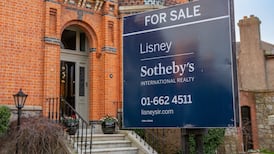Less than one per cent of current account holders have used the Irish Bankers Federation's personal switching code to switch banks in the first year of the its operation.
However the Irish Bankers Federation (IBF) said 1.5 per cent of all current account holders had switched banks - with or without using the code - in the year.
"IBF firmly believes that many, if not all, of these can be attributed indirectly to the code, through the greater public awareness of and appetite for switching that the code has clearly generated."
It said details of a new business switching code were to be announced in the coming weeks. The personal switching code was introduced on a voluntary basis by the banks.
It coincided with a study by the Competition Authority that identified obstacles to account-switching as a significant barrier to competition. The code commits the banks to facilitating account-switching within 10 working days.
Approximately 17,000 consumers have used the code since it became active on February 1st, 2005, the federation said. This represents 0.5 per cent of the 3.3 million current accounts in the Republic.
A further 34,000 consumers have switched accounts outside of the code.
The federation also said the rate of transfer compared favourable with countries such as Netherlands and the UK. In the Netherlands a new switching process launched in January 2004 has led to a switching rate of 0.25 per cent.
The federation also quoted the "banking report from Abbey", from November 2004, which stated that the UK switcher market comprised as little as 1 per cent of the total number of current accounts.
The federation's chief executive, Pat Farrell, said it was clear the code was working well in facilitating greater consumer choice.
"This is so not just in respect of the 17,000 consumers who have used the code process to switch, but also in respect of the 34,000 other consumers for whom the code has been an important catalyst in one way or another.
"Greater consumer choice further enhances competition in the marketplace, even where consumers choose not to exercise that choice."















